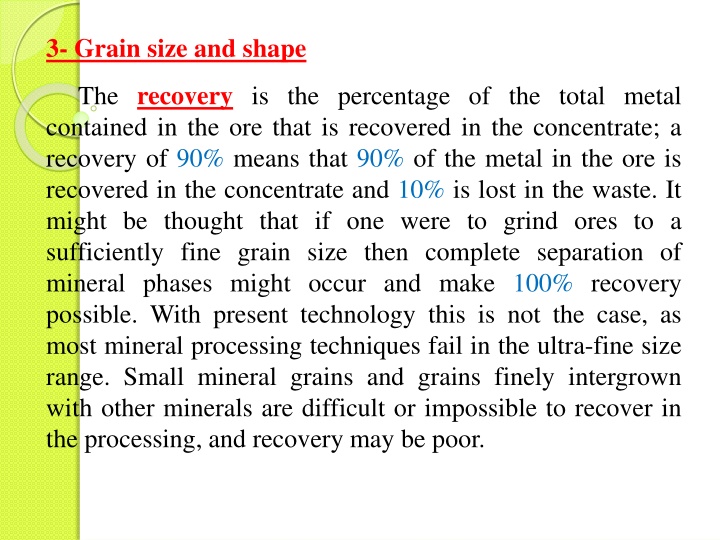
Key Factors Affecting Mineral Recovery in Mining Operations
Understand the critical factors influencing mineral recovery in mining operations, including grain size, ore character, cost of capital, and location considerations. These factors impact the efficiency and profitability of mineral extraction processes, highlighting the challenges and complexity of the mining industry.
Download Presentation

Please find below an Image/Link to download the presentation.
The content on the website is provided AS IS for your information and personal use only. It may not be sold, licensed, or shared on other websites without obtaining consent from the author. If you encounter any issues during the download, it is possible that the publisher has removed the file from their server.
You are allowed to download the files provided on this website for personal or commercial use, subject to the condition that they are used lawfully. All files are the property of their respective owners.
The content on the website is provided AS IS for your information and personal use only. It may not be sold, licensed, or shared on other websites without obtaining consent from the author.
E N D
Presentation Transcript
3- Grain size and shape The recovery is the percentage of the total metal contained in the ore that is recovered in the concentrate; a recovery of 90% means that 90% of the metal in the ore is recovered in the concentrate and 10% is lost in the waste. It might be thought that if one were to grind ores to a sufficiently fine grain size then complete separation of mineral phases might occur and make 100% recovery possible. With present technology this is not the case, as most mineral processing techniques fail in the ultra-fine size range. Small mineral grains and grains finely intergrown with other minerals are difficult or impossible to recover in the processing, and recovery may be poor.
4- Ore character A loose unconsolidated beach sand deposit can be mined cheaply by dredging and does not require crushing. Hard compact ore must be drilled and crushed. In hard-rock mining operations a related aspect is the strength of the country rocks. If these are badly sheared or fractured they will be weak and require roof supports in underground working, and in open pitting a gentler slope to the pit sides will be required, which in turn will affect the waste-to-ore ratio adversely.
5- Cost of capital Big mining operations require enormous initial capital investments. This means that the stage has been reached where few companies can afford to develop a mine with their own financial resources. They must borrow the capital from banks and elsewhere, capital which has to be repaid with interest. Thus the profits from the mining operation must cover the running costs, the payment of taxes, royalties, the repayment of capital plus interest on it, and provide a profit to shareholders who have risked their capital to set up or invest in the company.
6- Location Geographical whether or not an ore body is economically viable. In a remote location there may be no electric power supply, roads, railways, houses, schools, hospitals, etc. All or some of these infrastructural elements will have to be built, the cost of transporting the mine product to its markets may be very high and wages will have to be high to attract skilled workers. factors may determine
